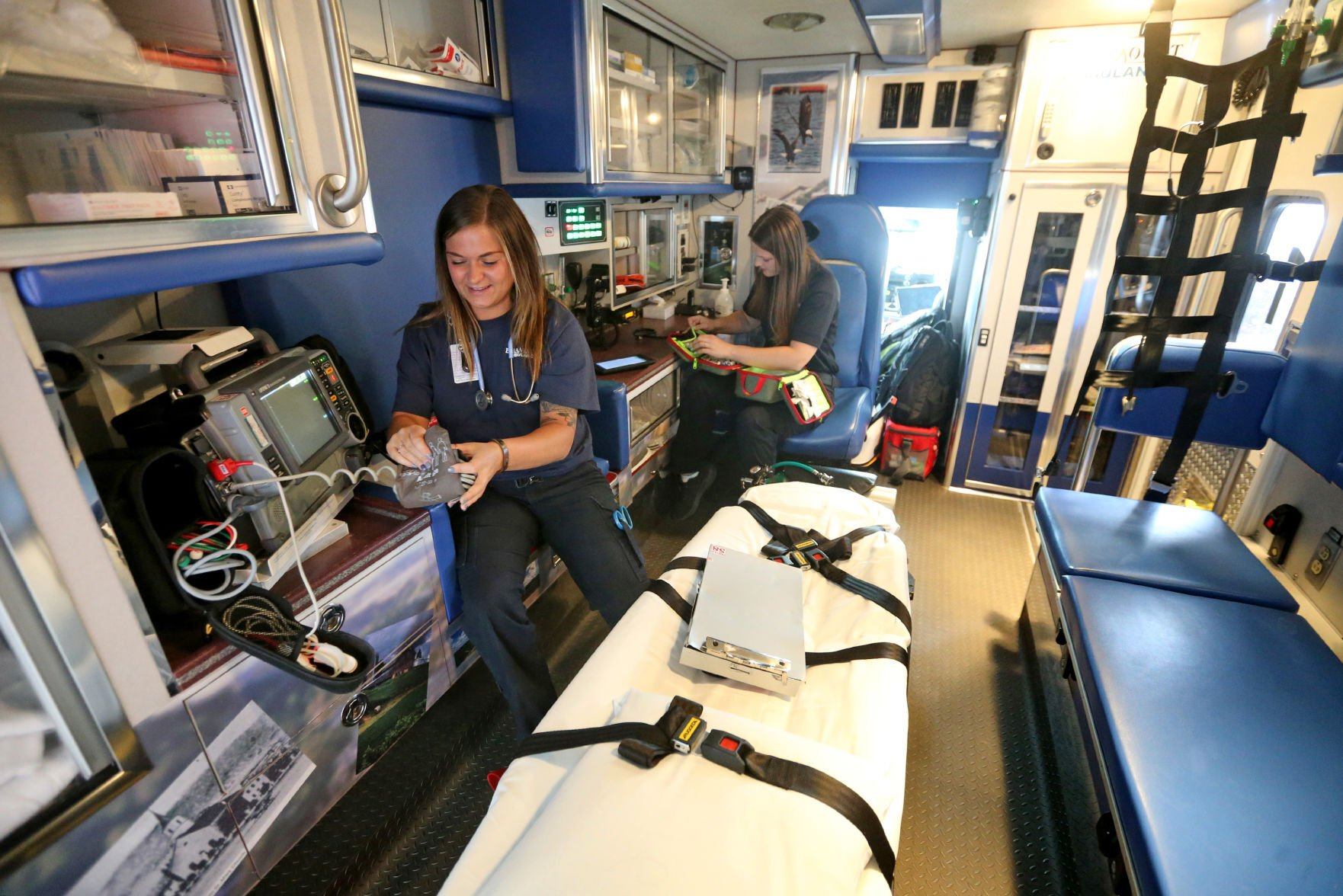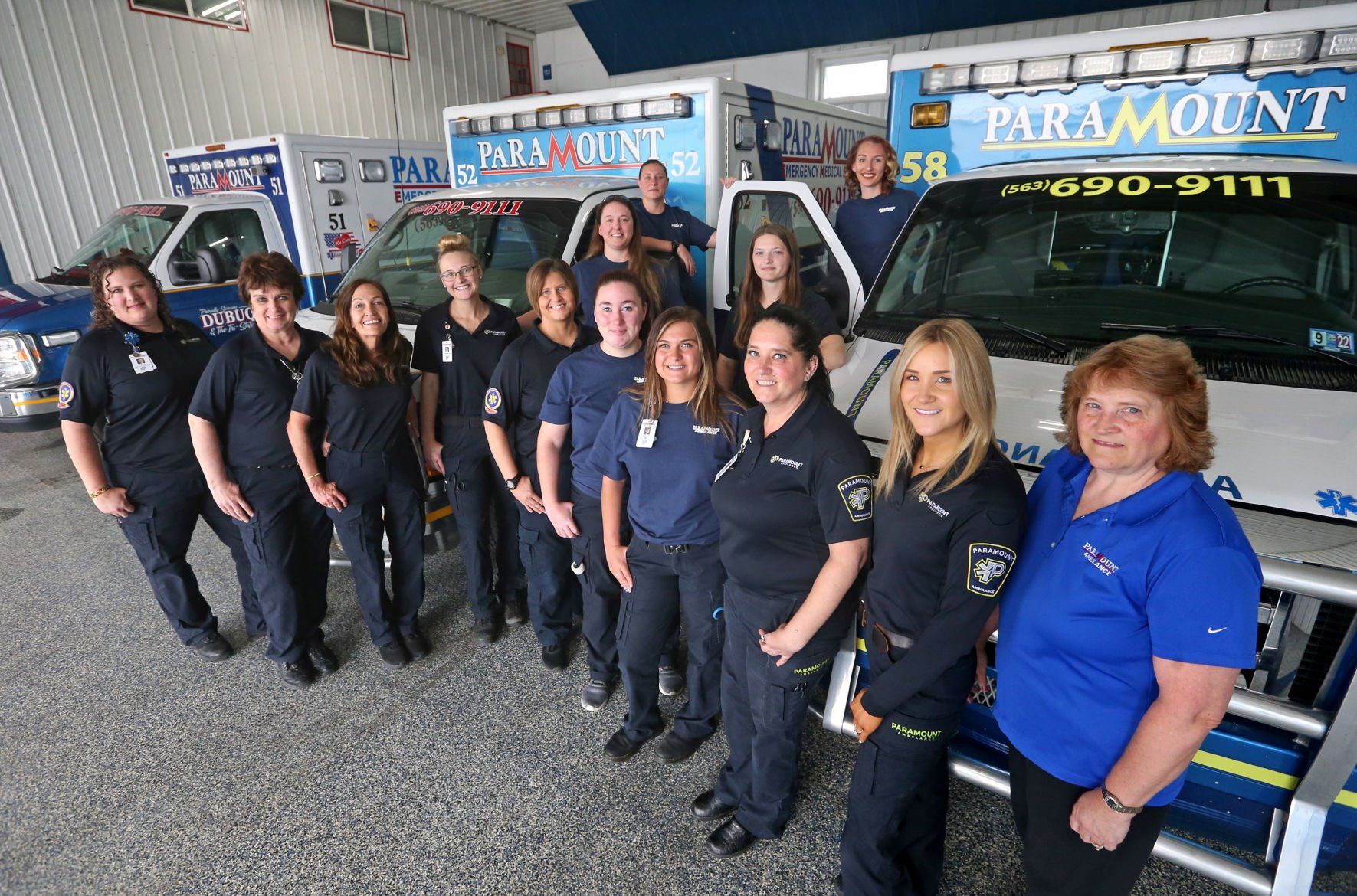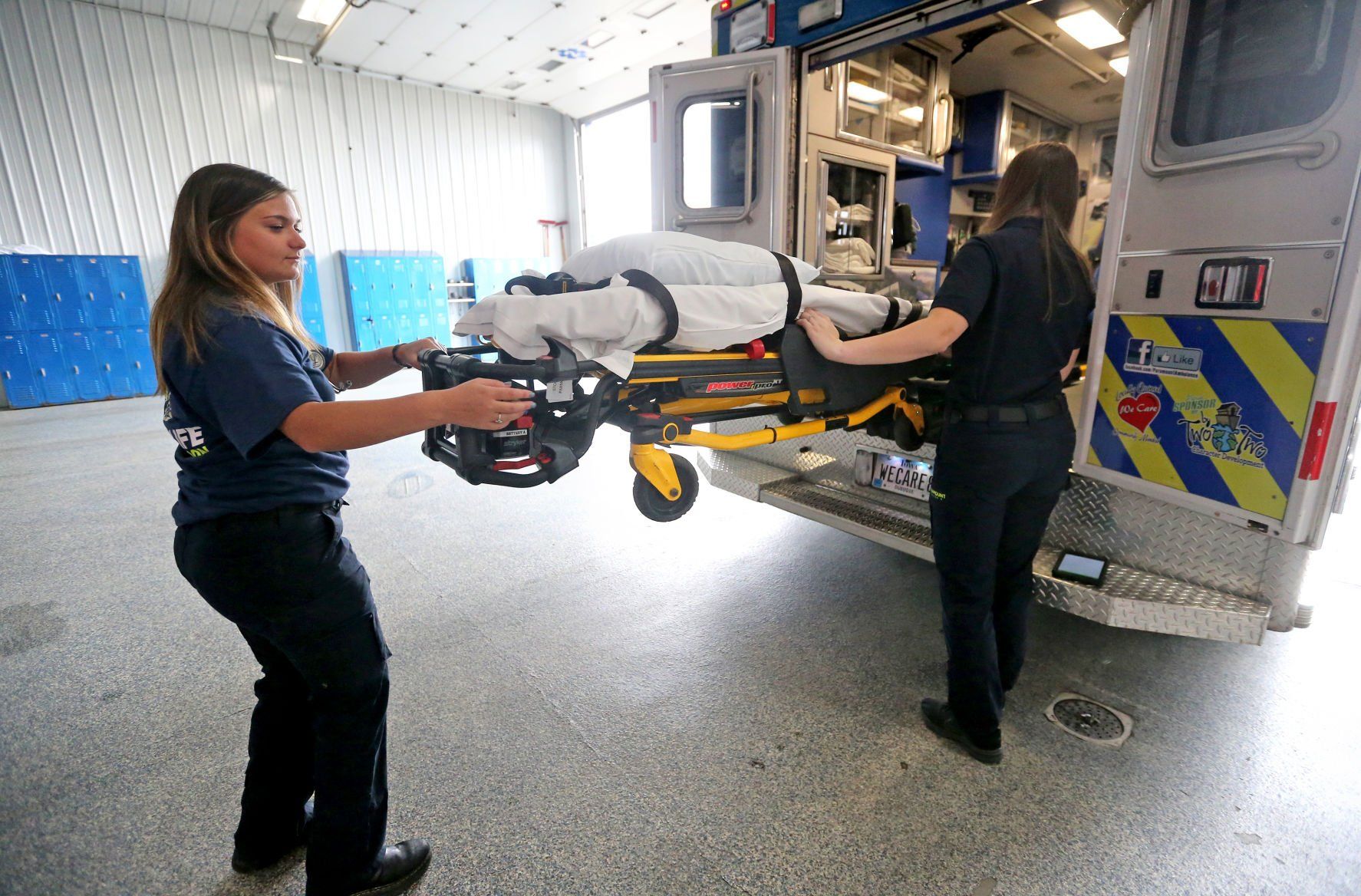For many area women working in emergency medical services departments, the job was a calling they always wanted to answer.
“I always kind of knew I wanted to be in emergency services,” said Dani Balk, a critical care paramedic with Paramount Ambulance. “… Every day offers a different challenge, and we get to make a positive impact, even if it’s just something simple like a ride to the nursing home.”
This week marks National EMS Week, honoring those who provide emergency medical care and take patients to hospitals for further treatment.
Over the years, more women nationally have been among the ranks of those honored during National EMS Week. In one of the most recent national studies on the subject, published in National Library of Medicine, the number of women working as EMTs increased from 28% in 2008 to 35% in 2017.
At Paramount Ambulance in Dubuque, 18 of the 41 EMTs and paramedics are women.
Balk and Paramount EMT Nancy Noel both recently were among more than 100 honorees given an American Ambulance Association Star of Life award in Washington, D.C. They noted that the number of women in the profession has grown since they became EMTs 12 and seven years ago, respectively.
“When I got in (to EMS), there were two women EMTs in the whole city,” Balk said. “Now, I can’t even count them.”
Coletta Matson has worked as a paramedic at Paramount for a year since moving to Dubuque from western Iowa. But she has worked in EMS since 2014, and she also has a background in law enforcement.
“For me, I love the challenge of figuring out what’s going on,” she said. “Going from EMS to law enforcement, I had a different perspective. I knew how to handle stressful situations.”
In her law enforcement training, Matson was one of three women in a nearly 50-person class. On the EMS side, she said, there is more of a balance between men and women.
Jess Mohr and Alyssa Owens, both paramedics at Paramount, joined EMS after serving in the military. They said they felt women are viewed as equals within EMS departments.
“We have all-female crews here,” Mohr said. “… It’s nice seeing more and more women in the field. We need it.”
Owens noted that some female patients feel calmer when they are being helped by a female EMT, especially in cases where a patient is about to give birth or was raped.
At Southwest Health in Platteville, Wis., five of the EMS department’s 30 staff members are women.
EMT Britany Bridge started at Southwest Health in January, though she has volunteered as an EMT in Lancaster, Wis., since taking classes three years ago.
“I never intended to make it a career, but it’s definitely where I needed to be,” she said. “I think the most fulfilling part is being able to be that person for someone in some of the worst moments of their lives, comfort them and do everything I can for them medically.”
Bridge has noticed more and more women join EMS agencies in recent years, especially as volunteers. In recent EMS classes, she has seen more women among the students.
“Seeing other women doing it and actually succeeding and doing just as much as the men do, I think it’s kind of opening up people’s eyes,” she said.
Nicki Wetter, a Southwest Health critical care paramedic, said she was one of two female EMS staff for years before several more were added.
“It’s really kind of come around in the last 10 years that I’ve been doing this, and it’s exceptionally nice to see,” Wetter said of seeing more women in EMS. “We shouldn’t have limitations regardless of who you are in that way.”
She added that she has enjoyed working with fellow female EMTs over the years, and she has grown close with all of her colleagues.
“You’re stuck in a truck with this person for 12 or 24 hours, depending on the shift,” she said. “That second family is so important there. When you end up having a really bad day or a really bad call, some things you can’t take home to your families. When you have that second family, they step in, and they’ve been there, too.”




